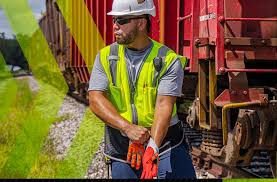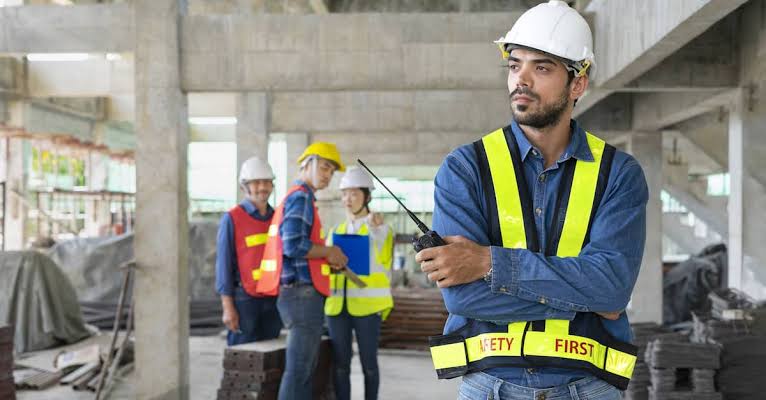In today’s fast-paced world, visibility and safety have become increasingly important not just for workers in hazardous environments but also for everyday people. The humble hi-vis vest, once confined to construction sites and industrial zones, has now made its way into our daily lives in surprising and practical ways. Whether you’re commuting on a bike, walking your dog at night or volunteering at an outdoor event, this piece of safety gear is becoming an essential part of modern living.
This article explores how the hi vis workwear trend has evolved, why reflective safety vests matter beyond the job site and how the ANSI 107 standard ensures maximum protection and performance.
The Purpose of Hi-Vis Workwear on Job Sites
At its core, hi-vis workwear was designed to enhance visibility in low-light or high-traffic environments. Workers in construction, road maintenance, warehouses and airports rely on high-visibility clothing to ensure they are seen by vehicle operators, heavy machinery operators, and co-workers. The bright fluorescent colors, usually yellow, orange or green combined with reflective tape, make workers highly noticeable during both day and night.
The reflective safety vest has become an industry standard because it offers an added layer of safety with minimal discomfort. Made from lightweight, breathable materials, it allows workers to move freely while staying visible at all times.
However, the significance of high-visibility gear extends far beyond occupational safety. As cities become busier and traffic denser, visibility has become a crucial aspect of personal safety for everyone.
Everyday Applications: Visibility Beyond the Job Site
Over time, hi-vis vests have transitioned from industrial sites to mainstream use. Their functionality, simplicity and affordability make them ideal for various everyday applications. Here are some of the most common modern uses:
1. Cycling and Motorbiking
Urban cyclists and motorbike riders often face visibility challenges, especially during early mornings or late evenings. A reflective safety vest enhances a rider’s presence on the road, allowing drivers to spot them from a distance. Some modern cycling gear integrates hi-vis materials directly into jackets or backpacks, offering both style and safety.
2. Running and Walking
Runners, joggers and pedestrians can benefit immensely from wearing high-visibility gear. When running near traffic or in low-light conditions, a hi-vis vest can drastically reduce the risk of accidents. For dog walkers, wearing reflective clothing ensures that both the walker and the pet are visible to motorists, even from afar.
3. Emergency Preparedness
Hi-vis vests are also essential in emergency situations. Whether you’re changing a flat tire on a dark roadside or assisting in an accident, wearing a reflective vest ensures others can see you clearly. Many vehicles now include hi-vis workwear as part of their emergency kits.
4. Event Staff and Volunteers
Outdoor events, festivals and sports meets often rely on volunteers and staff to manage large crowds. Hi-vis vests help organizers quickly identify staff members while improving the safety of those working in high-traffic areas. The practicality of these vests makes them a go-to choice for event management teams.
5. School and Community Programs
Many schools now encourage children to wear reflective accessories or vests during morning and evening commutes. Similarly, community cleanup groups and charity volunteers often use hi-vis workwear to ensure they remain safe and easily visible to passing motorists.
The Role of the ANSI 107 Standard
Not all high-visibility garments are created equal. The ANSI 107 standard (established by the American National Standards Institute) defines the performance requirements for hi-vis clothing in the United States. It specifies the minimum areas of fluorescent and reflective materials, design configurations and visibility performance levels.
Here’s why this standard is critical:
- Class 1 Garments: Suitable for low-risk environments where traffic does not exceed 25 mph, such as parking attendants or delivery drivers.
- Class 2 Garments: Designed for higher-risk areas like roadway construction or airport ground crews. These offer greater visibility coverage.
- Class 3 Garments: Provide the highest level of visibility and are used in high-speed traffic or emergency situations, often including sleeves and full-body coverage.
By adhering to the ANSI 107 standard, manufacturers ensure that their reflective safety vests and workwear meet the highest visibility and durability requirements. Consumers should always check for ANSI compliance before purchasing hi-vis gear to guarantee optimal protection.
The Fashion and Lifestyle Crossover
Interestingly, hi-vis workwear has also entered the world of fashion. What was once purely functional is now seen as trendy, thanks to designers embracing the bold colors and futuristic aesthetic. Reflective clothing lines have appeared on runways and in streetwear collections, blending safety with urban style.
For instance, hi-vis jackets, vests and accessories are now worn as fashion statements, particularly among young people and cyclists in cities. The reflective elements not only look striking under lights but also serve a practical purpose helping wearers stay visible while expressing individuality.
Sustainability and Innovation in Hi-Vis Design
Modern technology has transformed the design and functionality of reflective safety vests. Today’s versions are lighter, more breathable and often incorporate eco-friendly materials. Some brands use recycled polyester fabrics, ensuring sustainability without compromising durability.
Additionally, advanced reflective technologies, such as micro-prismatic tape, provide superior brightness and long-range visibility compared to older glass-bead styles. These innovations are making hi-vis gear more efficient and comfortable for daily wear.
Smart wearable technology is also making its way into hi-vis designs. Some newer models feature LED lighting strips or integrated sensors that respond to motion and light conditions enhancing safety even further.
Tips for Choosing the Right Hi-Vis Vest
When selecting a hi-vis workwear vest for professional or personal use, consider the following:
- Check ANSI Certification: Ensure it meets the ANSI 107 standard for visibility and safety.
- Fit and Comfort: Choose lightweight, breathable materials for better comfort during extended wear.
- Reflective Placement: Look for vests with strategically placed reflective strips on the front, back and sides for all-around visibility.
- Purpose and Class: Select the right class (1, 2 or 3) depending on your intended use or work environment.
- Durability: If you plan to use it frequently, opt for a vest made of tear-resistant and weatherproof fabric.
Conclusion
The hi-vis vest has evolved from being a piece of hi-vis workwear for industrial workers into a versatile, multi-purpose garment embraced by a wide range of users. Its practicality, affordability and safety benefits make it a must-have item for anyone who values visibility and protection whether on the job site or in daily life.
By understanding the importance of the ANSI 107 standard and investing in a reliable reflective safety vest, you’re not only prioritizing your safety but also embracing a trend that perfectly balances functionality and style. From construction zones to city streets, hi-vis gear continues to shine bright literally and figuratively.






